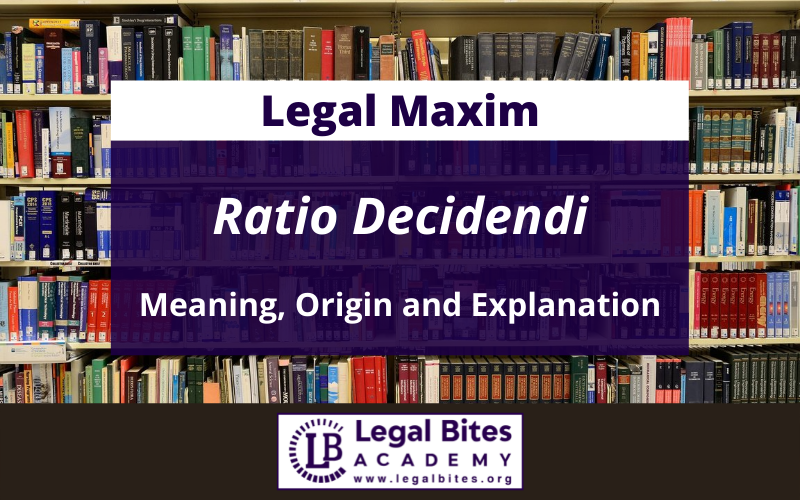Ratio Decidendi: Origin, Meaning and Explanation
This article titled ‘Ratio Decidendi: Origin, Meaning and Explanation’ is written by Sahajpreet Bhusari and discusses the legal maxim of Ratio Decidendi. I. Origin and Meaning Ratio decidendi is a legal maxim of Latin origin. In Latin, the maxim literally means ‘the rationale/reason behind the decision’[1]. II. Explanation and Application The maxim refers to the legal concept upon which… Read More »

This article titled ‘Ratio Decidendi: Origin, Meaning and Explanation’ is written by Sahajpreet Bhusari and discusses the legal maxim of Ratio Decidendi. I. Origin and Meaning Ratio decidendi is a legal maxim of Latin origin. In Latin, the maxim literally means ‘the rationale/reason behind the decision’[1]. II. Explanation and Application The maxim refers to the legal concept upon which the court bases its decision. Ratio decidendi is a legal expression that is applied...
This article titled ‘Ratio Decidendi: Origin, Meaning and Explanation’ is written by Sahajpreet Bhusari and discusses the legal maxim of Ratio Decidendi.
I. Origin and Meaning
Ratio decidendi is a legal maxim of Latin origin. In Latin, the maxim literally means ‘the rationale/reason behind the decision’[1].
II. Explanation and Application
The maxim refers to the legal concept upon which the court bases its decision. Ratio decidendi is a legal expression that is applied to significant facts. It is at this stage in a case that the judgement or principle that the case establishes is decided.
The ratio decidendi, unlike obiter dictum (by the way), is often binding on courts of lower and higher jurisdiction. The ratio decidendi is calculated using the court’s decision on the legal issues that the parties in the case argued over.
Other additional legal declarations in the text of a court opinion, as well as all utterances that do not constitute part of the court’s rulings on the matters determined in that case, are obiter dicta and are not binding.
The distinction between ratio decidendi and obiter dicta would be that the ratio is binding in its facts, whereas obiter dicta refer to suggestive comments exclusively, such as those made by a counsel to persuade the court of his client’s legitimacy.
III. Case Laws
The Supreme Court stated in State of Haryana v. Ranbir Alias Rana[2] that an obiter dictum, as opposed to a ratio decidendi, is a court’s statement on a legal subject raised in a case before it but not raised to the point of requiring a conclusion. Obiter dicta are, for the most part, ostensibly irrelevant to the ruling.
It might be a non-binding declaration of a point of view or thoughts. It’s also common knowledge that remarks that aren’t part of the ratio decidendi are considered Obiter Dicta and aren’t considered authoritative.
The Supreme Court declared in Sanjay Singh & Anr. v. the U.P. Public Service[3] that each higher court judgement contains three parts:
(i) the facts and the matter in question;
(ii) the reasons for such conclusion; and
(iii) the ultimate order embodying the verdict.
The ratio decidendi, or reasoning for the judgement, is not the final decision stating the judgment. In reality, even while the ratio decidendi of a judgement of this Court may indicate a specific conclusion, the decision (final order pertaining to relief) may be distinct and not a logical consequence of the ratio decidendi of the judgement.
This might be due to a future incident or the necessity to mould the relief in order to do total justice in the case.
The ratio decidendi of the ruling, rather than the final order in the judgement, sets the precedent. The terms ‘judgement’ and ‘decision’ are used interchangeably to refer to a judge’s whole judgement, final decision, or ratio decidendi.
References
[1] Ratio Decidendi, Available Here.
[2] Appeal (crl.) 650 of 1999.
[3] Writ Petition (civil) 165 of 2005.

